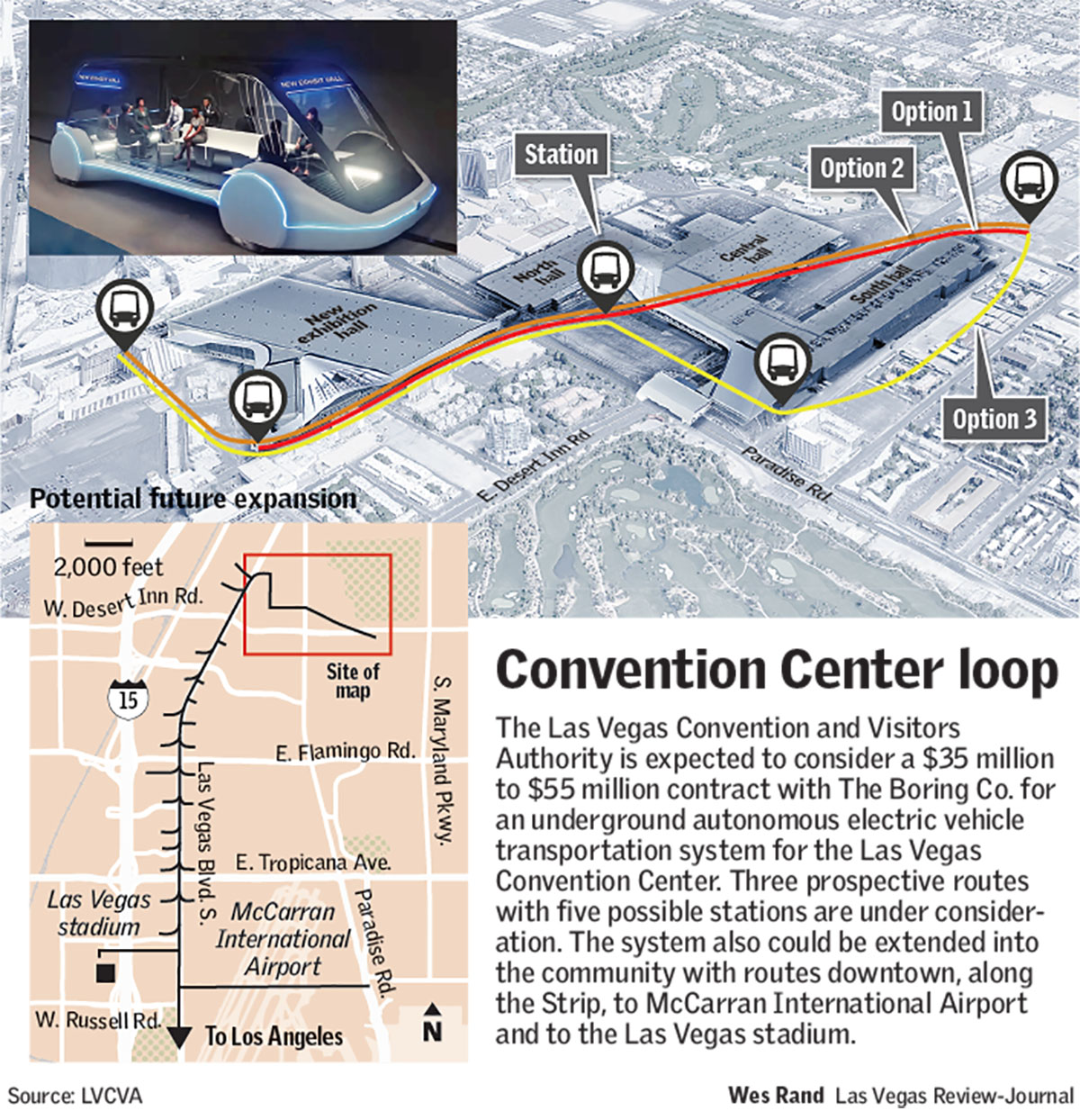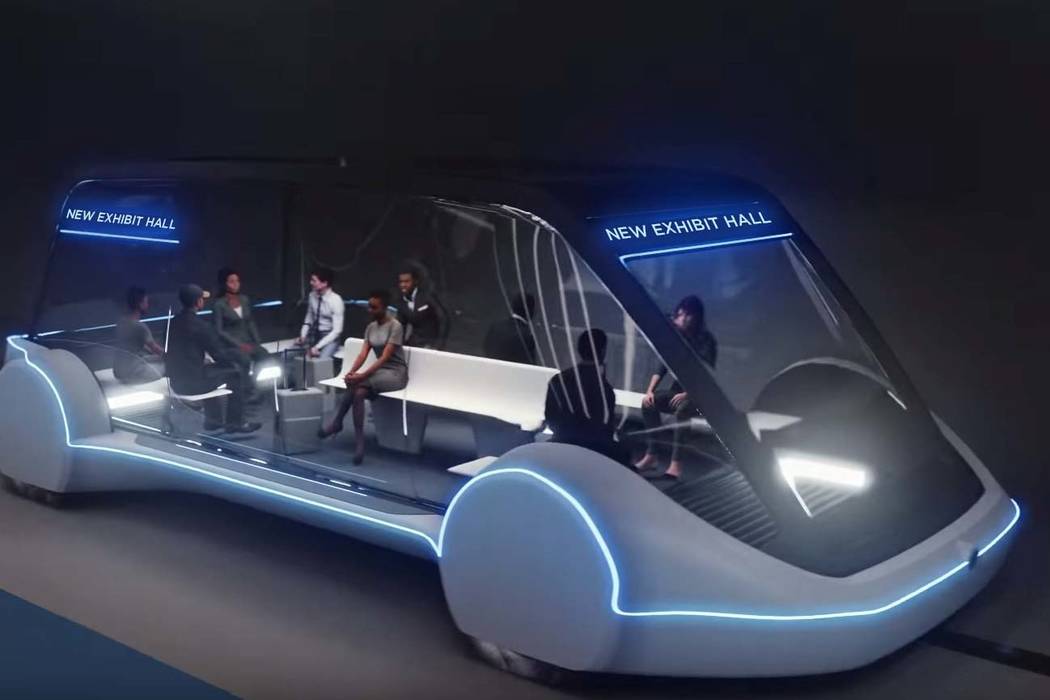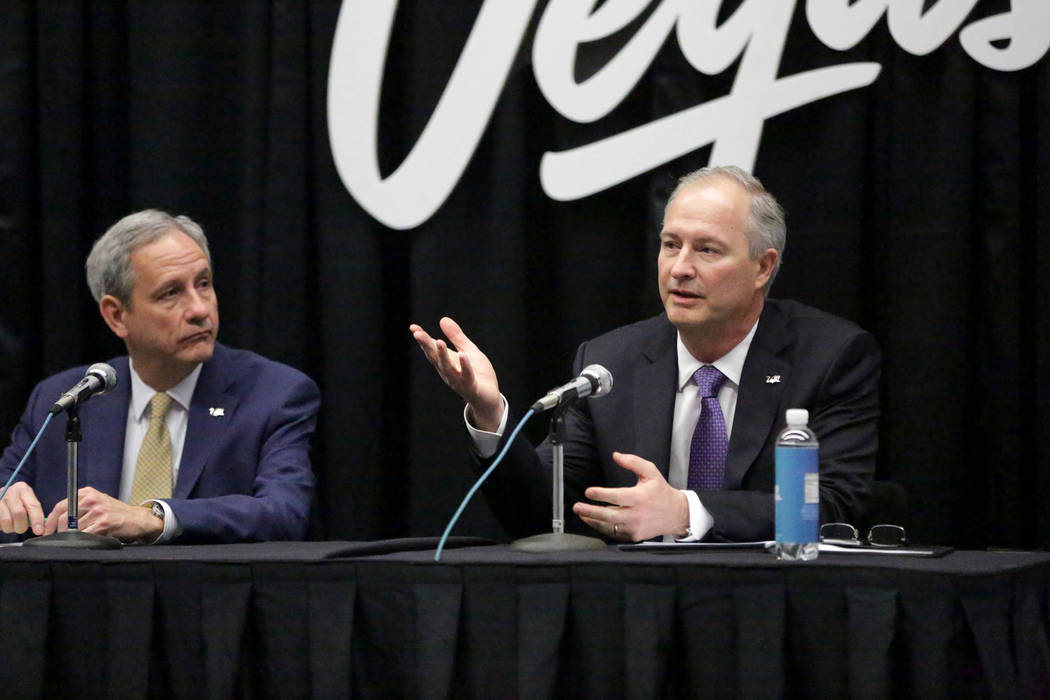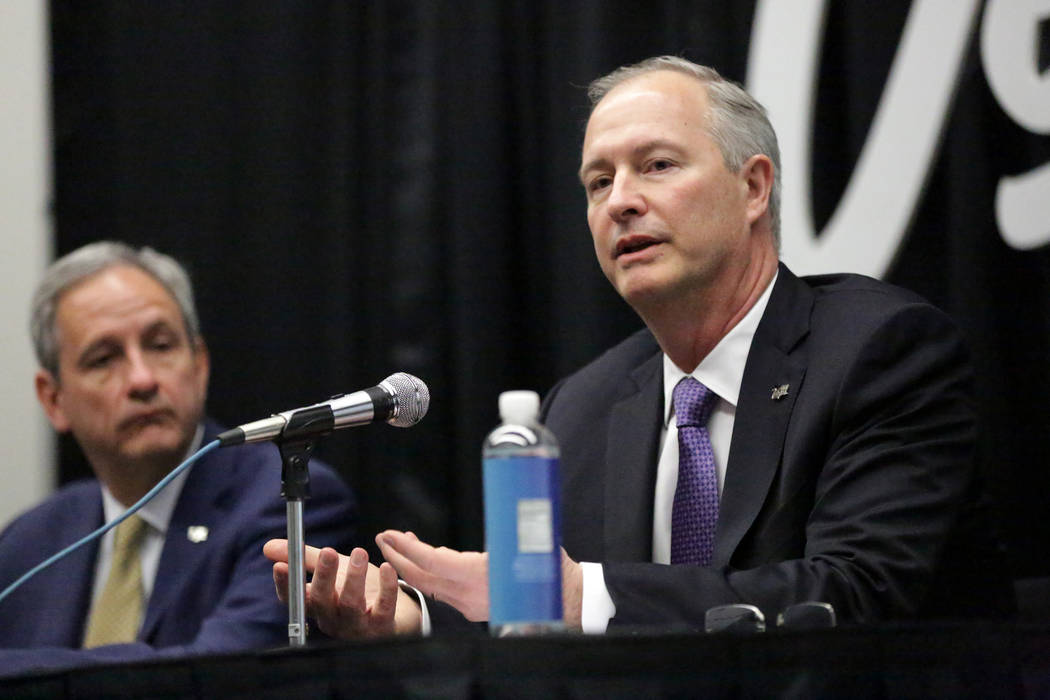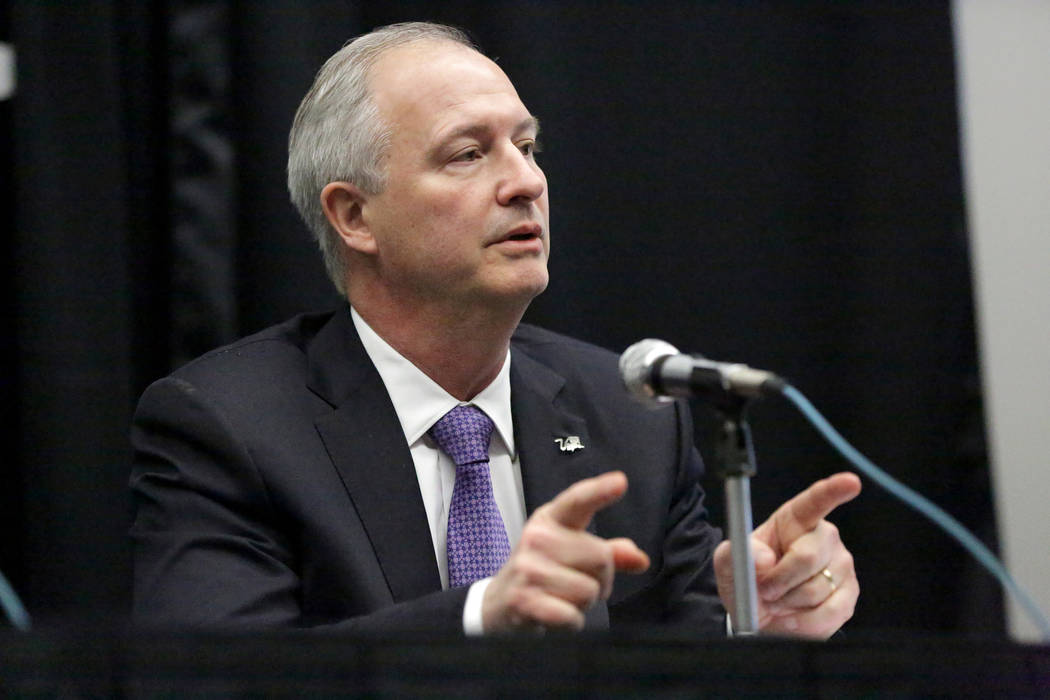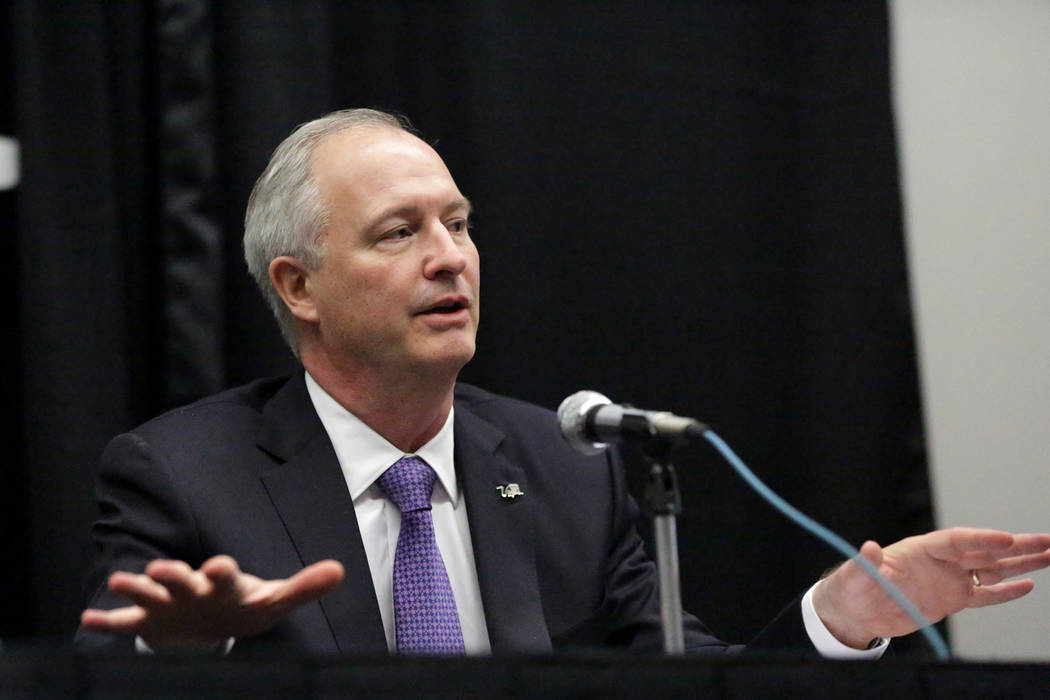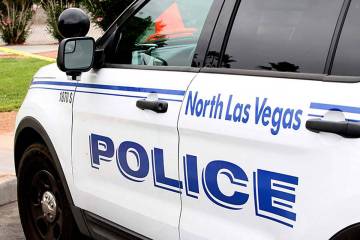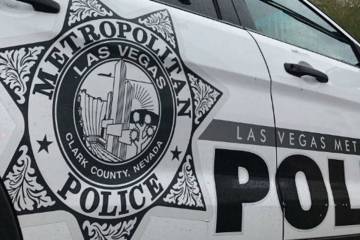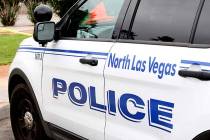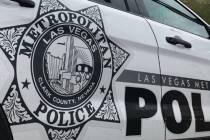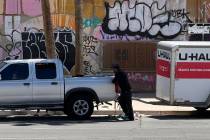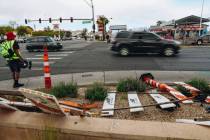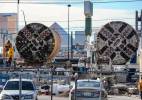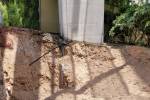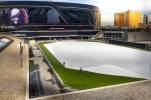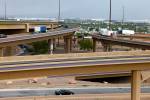In long run, Las Vegas underground transit could reach Strip, downtown
Las Vegas officials believe the city should look below ground to address its future transportation needs.
And that means thinking beyond the planned underground autonomous people-moving service announced Wednesday to connect McCarran International Airport with the expanding Las Vegas Convention Center District and one day extending it to the other busiest areas of the valley: the Strip and downtown.
The Las Vegas Convention and Visitors Authority project, projected to cost up to $55 million, would consist of a loop of underground express-route tunnels that could transport passengers between the airport and the convention center in autonomous electric vehicles at high speeds, according to the authority.
While the first shovelful of dirt has yet to be turned, authority officials and representatives of serial entrepreneur Elon Musk’s The Boring Co. say they believe they can have that system ready to transport attendees at the 2021 CES show in January 2021.
Future plan
But longer-term plans envision the underground system, featuring autonomous Tesla electric vehicles or a bigger 16-seat tram, running from the airport between the convention center to the Strip and downtown Las Vegas.
The system could have over 100 vehicles operating at one time and have the capacity to transport between 12,000 and 15,000 passengers per hour, according to authority CEO Steve Hill.
“We have talked to many people throughout the city and they see the opportunity it presents,” Hill said. “They see all it could be to all of our visitors. We’re excited about that opportunity and we’ll continue to pursue that.”
Their system would feature two tunnels, running side-by-side about 30 feet below street level, each about 12 feet in diameter, Hill said.
The LVCVA chose The Boring Co. model in part because it was seen as an affordable mode of mass transit in the resort corridor.
“It would be somewhere in the range of the cost of a bus ride and an Uber ride,” Hill said.
The system would likely be linked to a smartphone app, where a user could choose their desired station and a vehicle with that stop advertised on its digital signage would be dispatched to provide an express ride to the destination.
The project is similar to a highway system, as there would be exit ramps that would allow for vehicles to bypass stations that passengers aren’t going to, Hill said.
A tentative expansion plan map displays an extension from the convention center to other areas of the resort corridor, stretching from near Circus Circus to the Mandalay Bay, the Raiders’ rising Las Vegas stadium and onto the airport.
Is it feasible?
One issue that won’t spoil the mass transit dream is funding, Hill said. That’s because The Boring Co. would finance the project.
The route extension would eventually cover about 18 miles total. Based on the low end of convention center project’s projected cost, that would peg the possible resort corridor project at a minimum of around $500 million.
The Boring Co. would look to recoup those costs via ridership fees, Hill said.
It’s unknown if any tax breaks would be offered to The Boring Co. if the project goes forward, but that is common with such large-scale projects.
Tesla, another Musk-founded company, saw a $1.3 billion subsidy package approved in 2014 by the Legislature to build its 5.8 million square-foot Northern Nevada Gigafactory, which produces lithium-ion batteries.
A timeline wasn’t provided by either the LVCVA or The Boring Co. of how long it would take to construct the possible resort corridor tunnel system, but Hill said The Boring Co. can dig at a rate of about a mile every “month or two.”
“It’s fast in comparison to other types of projects. It’s quick construction,” he said. “It’s really unobtrusive because it’s underground.”
Building and designing the stations would take longer than boring the tunnels, Hill said.
Test bores drilled
The Boring Co. doesn’t foresee any issues as far as the drilling process goes, according to Steve Davis, The Boring Co. president, as engineers drilled test bores before submitting their request for proposal on the project.
“Typically you’re 30 feet below the surface, there’s not much there, there’s not much utilities,” Davis said.
“Sometimes there is. There could be … (building) foundation, so one thing with the tunnel is, you can just go deeper. If geology is there we can adjust for that.”
The company repurposes the soil that is dug up, using it t0 create bricks and other materials that can be used during construction.
“We’ve actually already taken some of the Las Vegas soil that we got when we did the boring and transformed them into bricks,” Davis said. “They look really nice.”
Tina Quigley, general manager of the Regional Transportation Commission of Southern Nevada, said she believes the project is feasible and would fit into the Las Vegas Valley’s multimodal transportation landscape.
Although the RTC won’t play any role in the convention center project, agency officials will keep a close eye on the project as it goes forward, she said.
“We’ll get to see, not only locally but also nationally, how this technology works,” she said. “We’ll get to determine through this demonstration, how it functions and where it is most appropriate.”
^
Contact Mick Akers at makers@reviewjournal.com or 702-387-2920. Follow @mickakers on Twitter.
